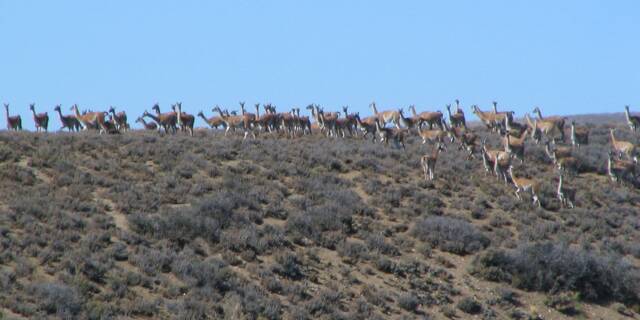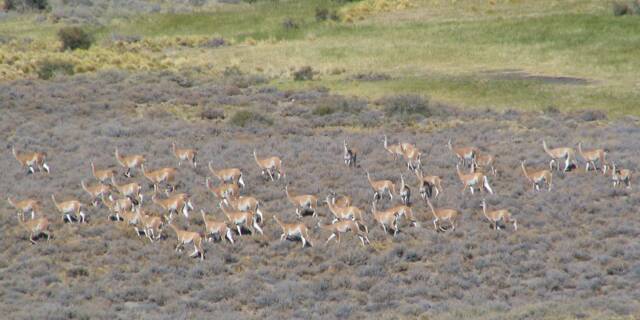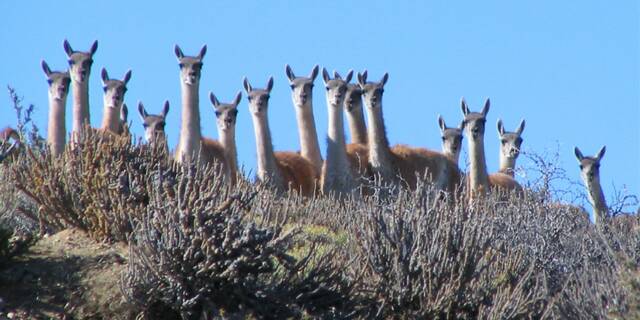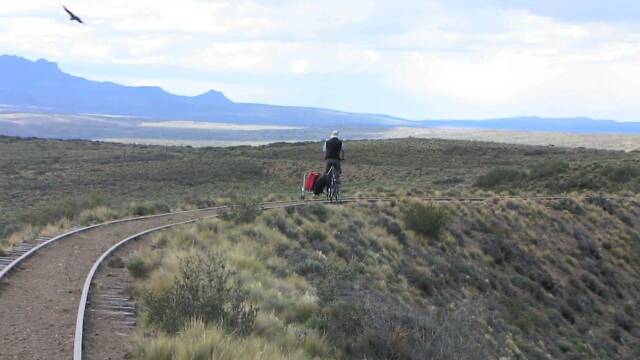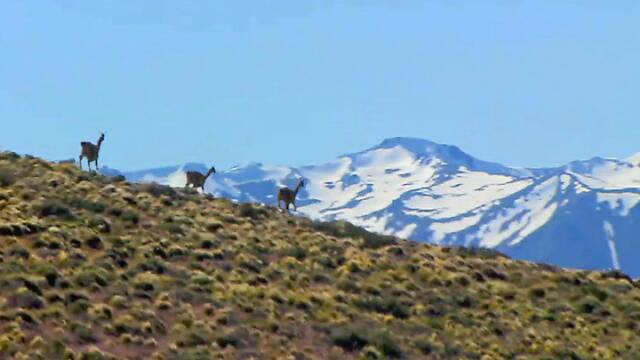Three guanacos (wild llamas) hightail it over the crest of the ridge after we spooked them as they walked along the railroad tracks.
Railbiking is an excellent way to view wildlife. Our bikes are virtually soundless and we can cruise through the countryside without frightening many of the birds and animals that would normally flee at the sound of a motorized vehicle. We are also traversing areas normally off the beaten track for humans, and because we are part animal and part machine we seem to arouse the curiosity of many of the critters we encounter. Many times we can approach within yards of an animal before it bolts away.
Arne Nilsson
Arne Nilsson
Arne Nilsson
The guanaco was perhaps our favorite sighting. We were fortunate
to see several large herds which is
a rarity unless you are well away from civilization.
Guanacos are one of the largest wild mammal species found in South America. They have only one natural predator, the mountain lion.
Guanacos live in herds composed of females, their young and a dominant male. Bachelor males form a separate herd. While female groups tend to remain small, often containing no more than ten adults, bachelor herds may have as many as 50 animals present. When
they feel threatened, guanacos alert the herd to flee with a high-pitched bleating call. The male will usually run behind the herd in order to defend them. They can run with a speed of 56 km (35 MPH) often over steep and rocky terrain. They are also excellent swimmers. The guanacos have an unusual method of survival; licking all the nutrients and dew from desert cacti.
To protect its neck from harm, the guanaco has developed thicker skin on its neck, a trait still found in its domestic counterparts, the llama and alpaca, and its wild cousin, the
vicuña. Bolivians use the necks of these animals to make shoes, flattening and pounding the skin to be used for the soles.
Mating season occurs between
November and February, during which males often fight violently to establish dominance and breeding rights. Eleven months later, a single calf, or chulengo, is born. Calves are able to walk immediately after birth. Male calves are chased off from the herd at approximately one year of age.
Guanaco fiber is particularly prized for its soft warm feel and is found in luxury fabric. The guanaco's soft wool is second only to that of the vicuña. The pelts, particularly from the calves, are sometimes used as a substitute for red fox pelts because its texture is difficult to differentiate. Like their domestic descendant, the llama, the guanaco is double coated with a coarse guard hair and soft undercoat, which is approximately 16-18 microns in diameter (human hair is 60-70) and is finer than the best cashmere.
Click HERE to continue to page two
Railbike Wildlife
Part V: Synopses Continued
Arne descends from the summit of one of our many climbs while a unidentified raptor soars overhead. These birds were our constant companions..
Patagonia is a bird watchers paradise. I kick myself for not carrying a guide. The raptors were varied and numerous. They would perch on the tops of the old telephone poles that followed the railroad line, flying off only as we drew near.
Peter in Patagonia
